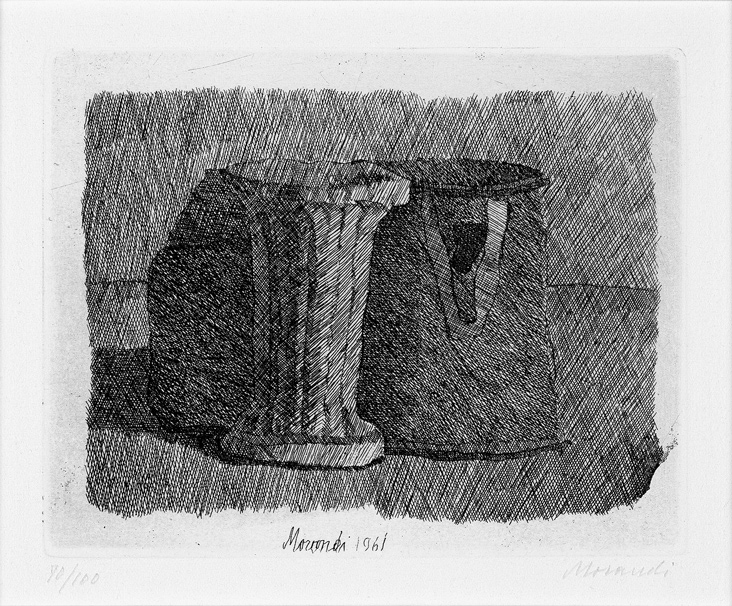Loading the page ...
Giorgio Morandi
(1890–1964, Bologna)
Piccola natura morta con tre oggetti. Etching on wove paper. 12.5 x 15.7 cm. Signed. Edition of 100 numbered impressions, 1961. Vitali 131.
Since the earliest beginnings of his career Morandi was preoccupied with the subject of still life in his printed work and experimented tirelessly in this field. The result was ingenious variations on a theme in which the artist, in imitation of his great role model, Paul Cézanne, probed the inner essence of everyday objects – such as vessels, bottles, pitchers and vases – and forged these objects into finished compositions, thus endowing them with a timeless, universal presence.
All his life Morandi was active as an etcher, his earliest work dating from 1912. He worked with great creative concentration and a high degree of technical finesse. An indication of the efficiency of his way of working is the fact that most of his etchings were printed in a single run, without preparatory states. Even in the event of there being several states, these involved barely perceptible corrections or shifts of emphasis which did not substantially alter the appearance of the composition. Being a master of his craft, Morandi was appointed professor of etching at the Accademia di belle Arti in Bologna in 1930, a post he held until 1956. Milton Glaser, an American pupil of Morandi’s, praised the serenity of his classes. The etching courses took place in a quiet, contemplative atmosphere, and the delights of the Emilian cuisine were a favourite topic of conversation. Only at the crucial moment, when a student was about to dip his copperplate into the acid bath, did a feeling of tension become noticeable. Morandi’s behaviour never varied. He remained silent for a moment, laid his hand on the student’s shoulder and said: “Corraggio!” (see exhibition catalogue Morandi. 50 Gravures, Galerie Berggruen, Paris, 1979).
The present, delicate still life is the artist’s last print and thus rounds off a richly creative career and an admirably unrelenting search for artistic truth. Despite the intimate format and the modesty of the subject the composition radiates a monumental grandeur. A fine network of dense cross-hatchings covers the portrayal, making the few everyday objects appear in a magical, shimmering light. The perfection of technique and composition makes it clear why Morandi was called the “post-Cubist Chardin”.
A superb impression of great clarity, printed on the full sheet.
